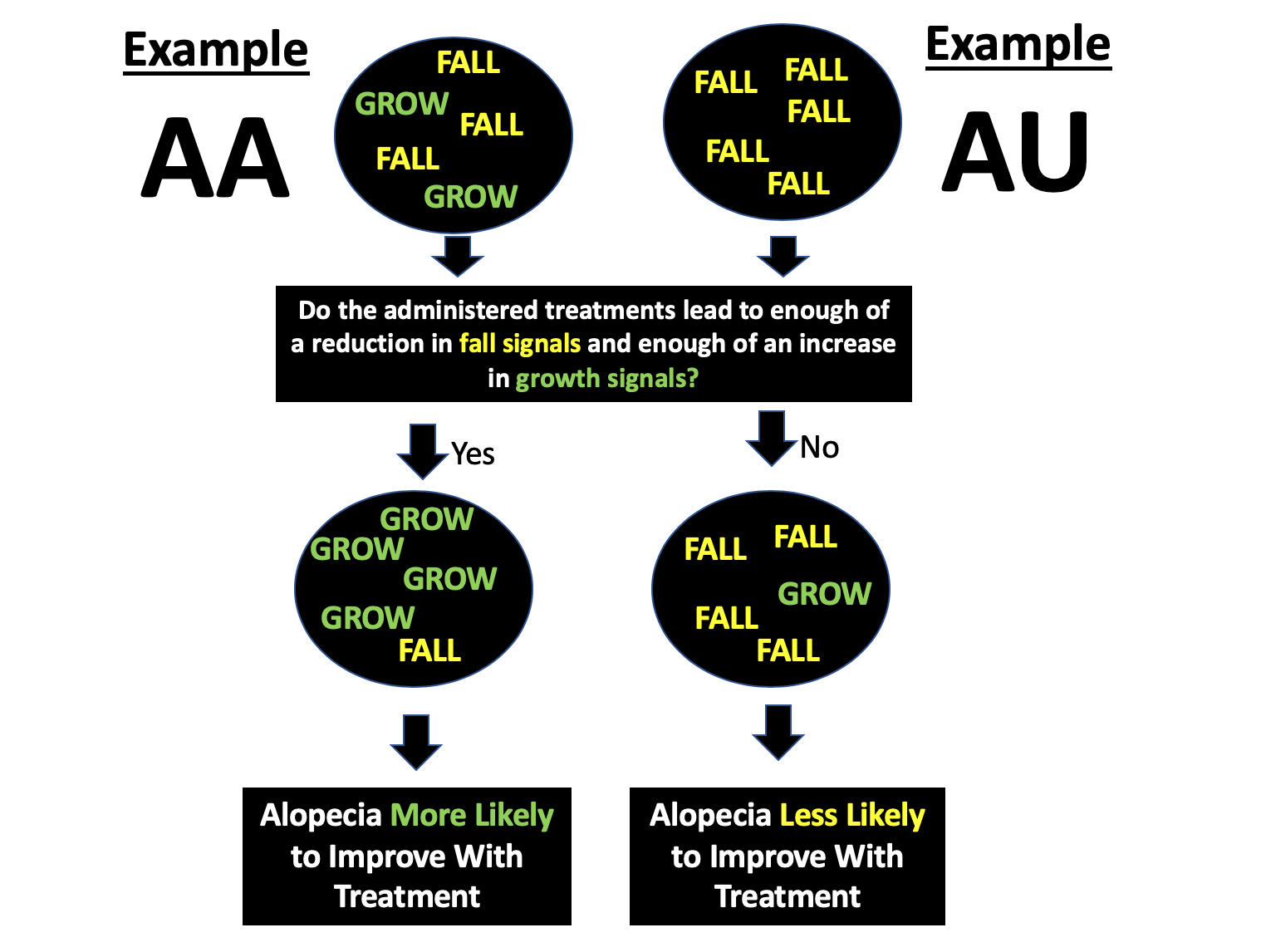The significance of early onset hair loss in evaluating alopecia areata
Will my daughter’s alopecia Areata recover?
I’ve selected this question below for this week’s question of the week. It allows us to discuss the importance of the prognostic factors in evaluating alopecia Areata.
Here is the question….
QUESTION
What is your opinion on 'the younger a patient is diagnosed with alopecia,the less likely there is a chance of recovery/reversal?'
My daughter was officially diagnosed at 18 months with alopecia (she has complete hair loss). We were told that unfortunately the younger a patient is diagnosed with it, the less chance she will recover/have hair. I would like too know your thoughts on this and why this seems to be the case.
She is 3 now, has had total hairloss since 18 months and prior to that had a lot of large bald patches/irregular hair growth. She currently has a few lashes and little bit of brows (these don’t seem to have any pigment/look clear- she was born with quite dark hair). Her lashes and brows dont usually stay very long when they do manage to come in.
ANSWER
Thanks for this question. I would generally agree with the statement you have quoted, namely that the younger a child is diagnosed with AA, the lower the chances of regrowth/recovery. The way that I would word it even more accurately would be to say the following: “the younger a child is diagnosed with alopecia, the lower the chances of regrowth/recovery especially if the child is under 5 and has more advanced hair loss at the time of their visit or has other negative prognostic factors from the list of negative prognostic factors”
Over the last many 30 years, researchers have identified several prognostic factors that help hair specialists predict the likelihood of regrowth.
Over the past 30 years, several factors have been found to be associated with poorer prognosis for regrowth of hair. These factors are not absolute but do enable clinicians to be able to better predict the ilkelihood of whether patients will regrow hair. These are by no means definite but nevertheless provide a helpful guide.
The most important prognostic factors for alopecia areata are:
1] Extensive loss (especially alopecia totalis and universalis)
2] Early age of onset (especially under 5)
3] Ophiasis variant (hair loss at the back regions of the scalp)
4] Nail changes suggestive of alopecia areata
5] History of alopecia areata in a family member
6] Presence of other autoimmune diseases in the patient (eg, atopy, Hashimoto thyroiditis)
The above prognostic factors teach us that for your daughter, the diagnosis of Alopecia Areata at 18 months and especially a more severe form (complete hair loss), indicates she is less likely to regrow hair. Factors such as a family history and whether she has nail disease or other autoimmune diseases also are helpful to review but it would not alter the general opinion that chances for regrowth are lower. The chances are never zero, but regrowth is unlikely.
Good treatment options for Alopecia Areata increasing rapidly as years go by and so more and more good options are certainly on the way in years ahead as we understand more about the condition. There’s no doubt about that. You’ll want to keep close contact with the paediatric dermatologist. Organizations like the National Alopecia Arteata Foundation in the US and Canadian Alopecia Areata Foundation here in Canada can provide helpful updates on progress - and so can our website too.
Children with Alopecia Areata often have low vitamin D and other factors can be evaluated based on the full information you share with the doctor (ie. evaluation for iron issues, thyroid disease, anemias, other deficiencies). Some young children with alopecia areata have eczema (itchy patches of skin) and some have asthma and allergies so all these need to be carefully reviewed with the doctor.
Why is regrowth less likely?
We don’t understand all the factors involved in alopecia areata yet. We do know that the patient’s genetics is very relevant. In other words, the genes they are born with have a major influence over whether they will develop alopecia areata or not. Factors in the environment definitely have some role and these include things like infections, stress, and diet.
For children with alopecia areata occurring by 18 months, it’s the genetics that is guiding the development of the Alopecia Areata. There are likely strong genes for alopecia areata that are present (and were present from birth) which are providing signals for the hair to be lost from the scalp. We don’t know how to easily test these genes yet but someday it will be possible. These strong genes provide the hair follicles with messages to ‘fall’ and even with the currently available treatments we have, these messages can not be easily overcome. Someday it will be.
Thank you again for the question. I do hope this will be helpful to you and your daughter.

